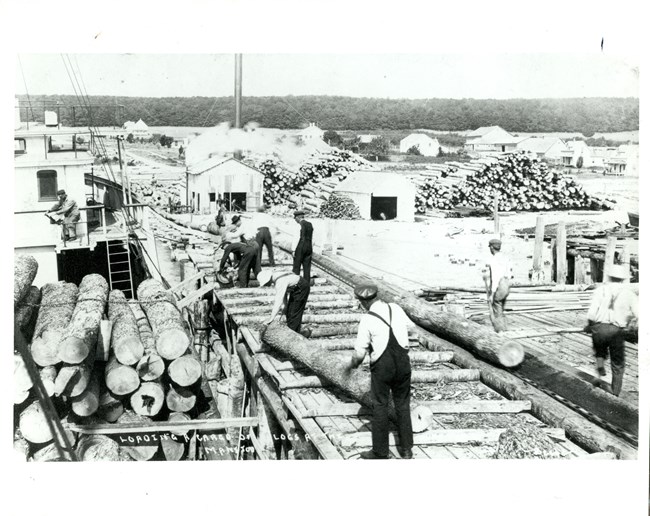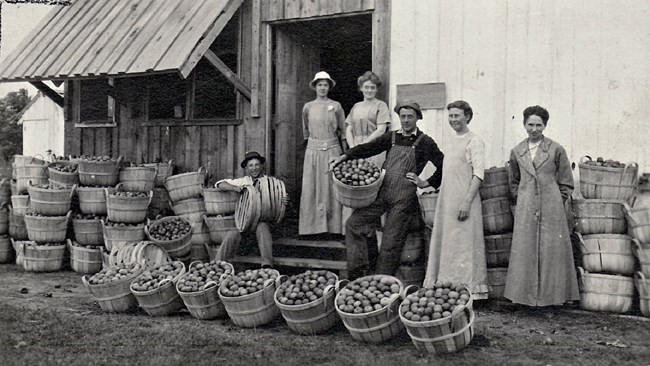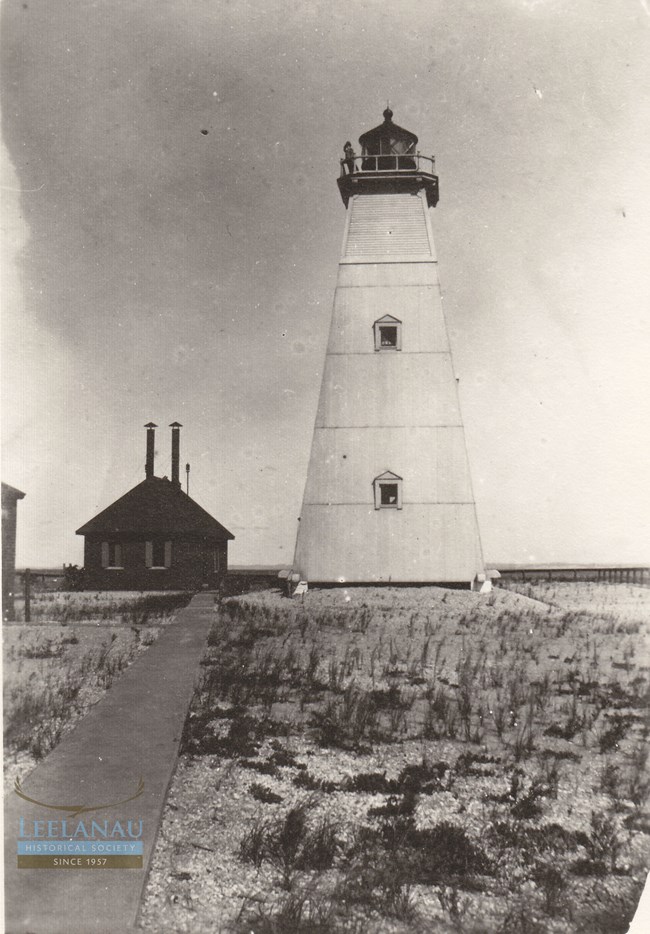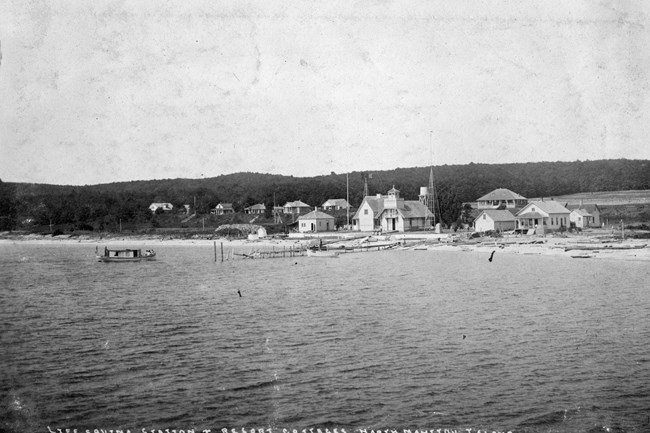
NPS Photo Early HistoryNorth Manitou Island has a long and rich history spanning thousands of years. From the prehistoric Native Americans to the visitors of today the island has provided shelter, nourishment, livelihood, and entertainment. At the same time the island has gone through many periods of change, challenging some while providing opportunity for others. North and South Manitou Islands have been occupied by Native Americans for at least 3,000 years, possibly as long as 13,000 years. They primarily used the islands and surrounding areas as seasonal hunting grounds and temporary settlements as part of a vast trade network that extended as far as modern Florida. As a result, North Manitou Island is one of the richest archaeological sites in the Great Lakes. Villages of North ManitouEuropean settlers began moving into the area in earnest in the mid-1840s. For the next thirty years the Manitou Islands became important for ships sailing to and from Chicago to stop and load wood to fuel their steam engines. By 1860 the population of the island had grown to 269 with the majority being recent European immigrants who worked to clear and process the island's forest into lumber and fuel for hungry ship’s boilers. 
NPS Photo A second village on the island, Cresent, was established in 1906 after Smith and Hull Company purchased 4,000 acres of timber land and leased a section of beachfront property on the island’s west side. Cresent had its own dock, sawmill, a boarding house, blacksmith shop, general store, post office, and a saloon that was later converted into a school and church. Smith and Hull closed the mill and moved off the island in 1915, bringing an end to the village. 
NPS photo Fueling to FarmingTowards the end of the 1860s the lumber business on the island went into decline, as the vast majority of the trees had been cleared. By 1870 the population had plummeted to just ninety-four people. However, the end of the lumber industry on the island quite literally cleared the way for aspiring farmers to work the land, providing other opportunities to the residents. The first homestead claim on the island was made in 1875 by Andrew Anderson. Six more claims were made by 1880. Commercial crops grown included fruit, corn, oats, wheat, and potatoes. The homesteaders also produced dairy products, pork, beef, and wool, which were mostly for their own consumption. Life was nevertheless difficult for the homesteaders, who struggled with growing crops in the sandy soil. 
Photo courtesy of the Leelanau Historical Society Life-Saving Station on North ManitouThe dangers of the Manitou Passage prompted the United States Life Saving Service to construct a life saving station in 1896. Shortly after, the United States Lighthouse Establishment began construction of a lighthouse on the island’s southern tip. The lighthouse was decommissioned in 1938 and destroyed in 1942.
NPS Photo/ Manitou Island Association A New EraSilas Boardman, a retired banker and agriculturalist from Chicago, found success on the island with his own open-range cattle operation. In 1894, Boardman sold 10 parcels of land to his son-in-law, George Blossom. Blossom’s friends were interested in building summer homes on the island. Thus, a new era began as the island became more and more popular as a summer vacation destination. By 1942, seventy percent of the island was owned by the Manitou Island Association, which used it as a hunting and fishing resort.Sleeping Bear Dunes National Lakeshore was created by act of congress in 1970. The Manitou Islands fell within the park’s boundary and North Manitou was purchased in 1984 for $12.5 million. Traders to tourists, wood cutters to lifesavers, North Manitou Island has seen all kinds of people from all walks of life. Visitors and settlers alike have met challenges and opportunities head on. Visitors to the island today can see for themselves the natural beauty and historical significance of North Manitou Island. |
Last updated: October 4, 2024
